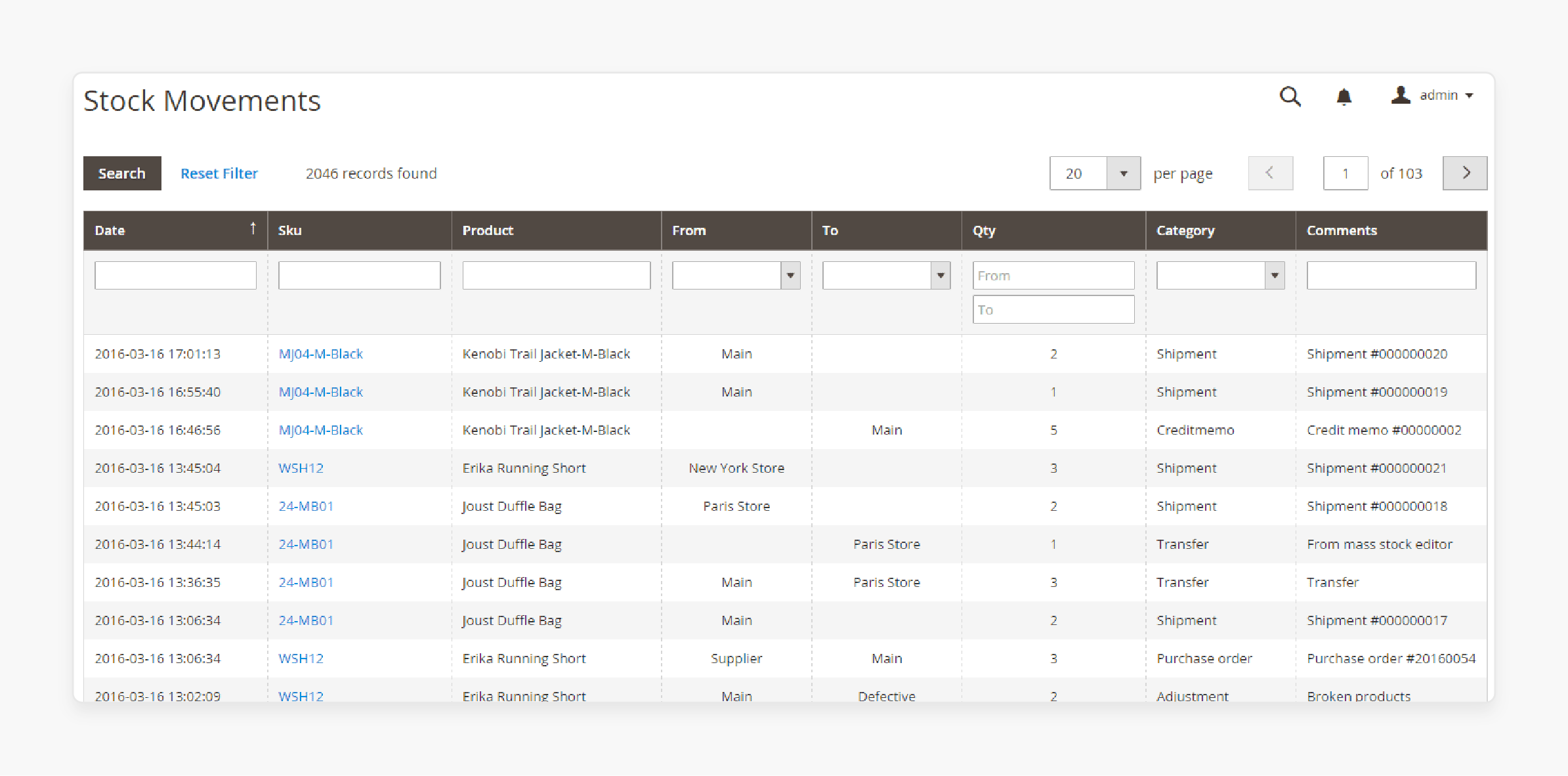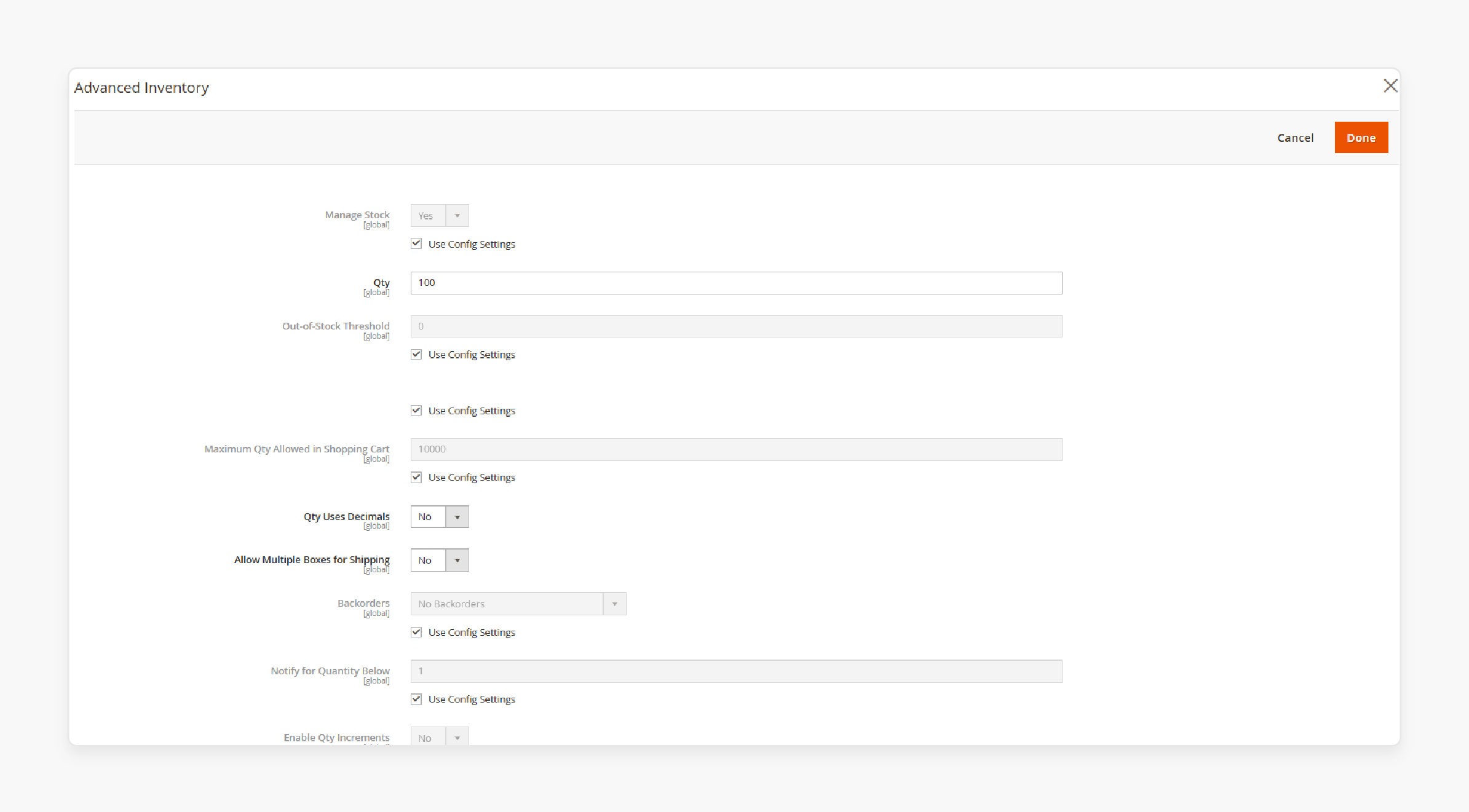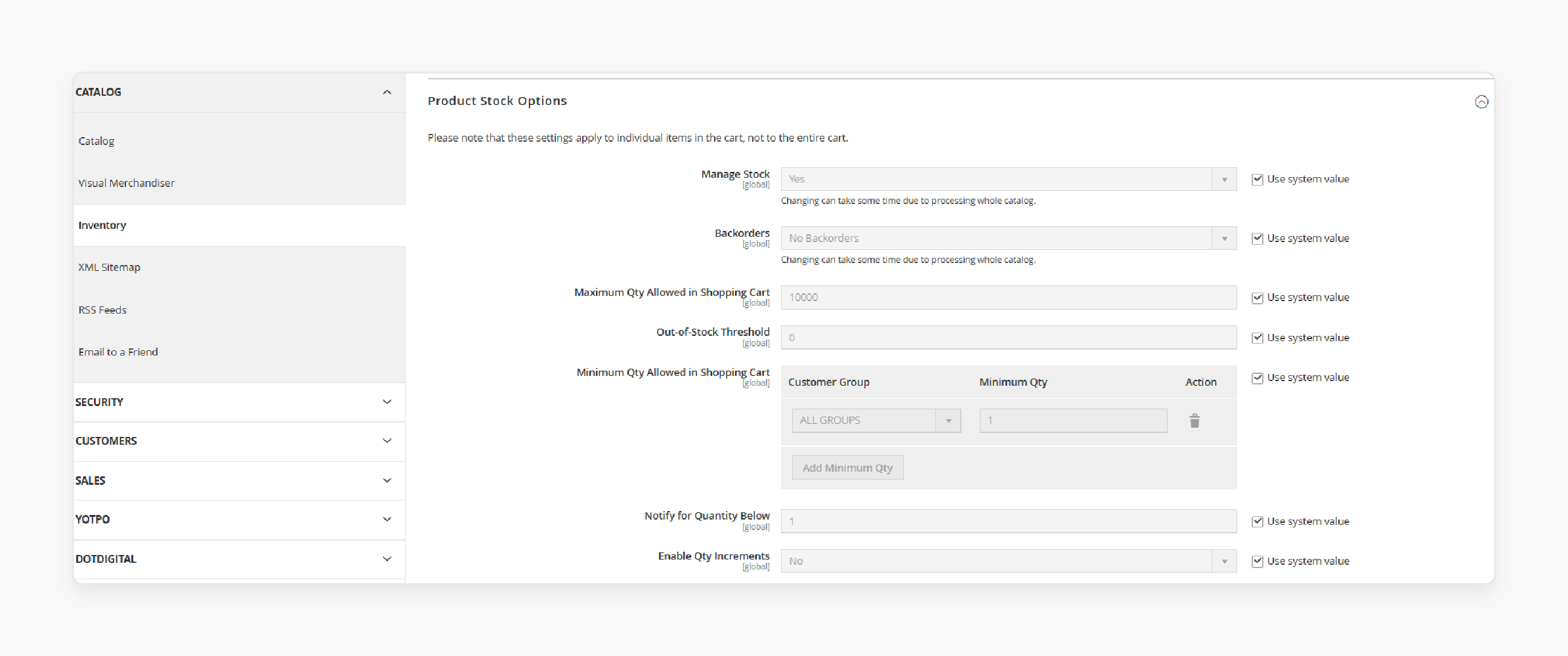
Magento 2 Manage Stock for Subscription-Based Products
Are subscription stockouts killing your recurring revenue? It is because your Magento 2 manage stock system needs specialized configuration. This is necessary for subscription-based e-commerce products.
This article outlines inventory strategies to maintain a steady stock of subscribed products. It shares techniques to streamline fulfillment and automate stock control.
Magento 2 Manage Stock for Subscription-Based Products
Subscription Stockout Crisis Monitor
Real-time visualization of how stockouts impact your recurring revenue
Revenue at Risk
Monthly recurring revenue exposed
Affected Subscribers
Customers facing disruption
Churn Probability
Risk of permanent loss
Are subscription stockouts killing your recurring revenue? It is because your Magento 2 manage stock system needs specialized configuration. This is necessary for subscription-based e-commerce products.
This article outlines inventory strategies to maintain a steady stock of subscribed products. It shares techniques to streamline fulfillment and automate stock control.
Key Takeaways
Stock Decrement Timing
Configuration reserves inventory for future shipments
Dynamic Thresholds
Uses 3 critical measurements: demand, lead time, safety buffer
Backorder Activation
Prevents disruptions to subscription services during restocking
Supplier Integration
Setup uses 2 proven methods: API connections and EDI
Performance Monitoring
Advanced reporting to investment levels
- Stock decrement timing configuration reserves inventory for future shipments.
- Dynamic thresholds use 3 critical measurements: demand, lead time, and safety buffer.
- Backorder activation prevents disruptions to subscription services during restocking.
- Supplier integration setup uses 2 proven methods: API connections and EDI.
- Performance monitoring involves advanced reporting to investment levels.
- How to Manage Stock Levels in Magento for Subscribed Products?
What Are Subscription-Based Products in Magento 2?
Subscription-based products are items customers buy on a recurring schedule. Examples include:
Monthly coffee deliveries
Quarterly skincare boxes
Annual software licenses
Unlike traditional ecommerce purchases, customers commit to receiving products over extended periods. This creates contractual obligations for businesses. They must ensure product availability for future deliveries, alongside current orders.
Higher LTV than one-time buyers
More predictable revenue
Lower acquisition cost
So, these products generate predictable revenue, yes. But they demand sophisticated Magento inventory planning.
Why Is Stock Management Critical for Subscriptions?
Subscription inventory management differs from traditional ecommerce systems. It creates unique challenges that compound business risks across billing cycles.
I. Common Stock Management Challenges

Subscription inventory management operates on different principles from standard ecommerce stock systems.
Temporal stock allocation
Reserve future inventory without reducing current product availability displays.
Multi-cycle demand forecasting
Calculate requirements across 3 to 12 billing periods.
Buffer calculations
Adjust safety product stock based on subscription volatility coefficients.
Bi-directional stock flows
Handle both subscription additions and cancellation-driven returns.
Cross-channel inventory conflicts
Prevent one-time orders from consuming reserved subscription stock.
How to Manage Stock Levels in Magento for Subscribed Products?
Implement a sophisticated 4-layer stock architecture to ensure consistent subscription fulfillment
Click on a layer to explore
Each stock layer serves a specific purpose in maintaining subscription continuity
Real-time Allocation
Dynamic stock assignment based on subscription priorities and order velocity
Protection Levels
Multi-tier safeguards prevent subscription disruptions during peak periods
Auto-rebalancing
Intelligent redistribution optimizes stock levels across all layers
1. Configure Advanced Stock Architecture
I. Subscription Product Identification Matrix
Create hierarchical product classification systems. Enable granular inventory management control across subscription types.
Advanced Tagging Method:
- Primary subscription attribute: Boolean flag for recurring products.
- Frequency classification: Weekly, monthly, quarterly, and annual categories.
- Demand volatility index: High, medium, low variance classifications.
- Supplier reliability coefficient: Lead time consistency ratings.
- Cross-sell dependency mapping: Connecting related product stock inventory.
II. Stock Decrement Logic

Configure intelligent stock reduction timing that aligns with subscription fulfillment.
Navigation path: Stores > Configuration > Catalog > Inventory > Stock Options
Advanced configuration settings:
- Set 'Decrease Stock When Order Placed' to 'No' for subscription items.
- Enable 'Return Credit Memo Item to Stock' for returns.
- Configure 'Display Out of Stock Products' to 'No' for subscription items.
- Set up custom stock status logic using product attributes.
2. Set Up Threshold Calculations
I. Statistical Stock Level Calculations
Use quantitative methods to determine product stock thresholds based on subscription data analysis.
Mathematical Framework:
Minimum Stock Formula
Least Stock = (Average Demand × Lead Time) + Safety Stock
Safety Stock Formula
Safety Stock = Z-Score × √(Lead Time × Demand Variance)
Calculated Thresholds
Safety Stock
0
units buffer
Minimum Stock
0
reorder point
Maximum Stock
0
optimal ceiling
Threshold Configuration Variables:
| Variable | Calculation Method | Typical Range |
|---|---|---|
| Lead Time Multiplier | Historical supplier data | Variable range |
| Demand Variance | Rolling standard deviation | Variable range |
| Service Level Target | Business risk tolerance | High percentage range |
| Seasonal Change | YoY demand comparison | Variable multiplier |
II. Alert Configuration Method

Navigate to: Catalog > Products > [Product Name] > Advanced Inventory
- • Set 'Notify for Quantity Below' using calculated thresholds.
- • Configure alert levels: Warning and Critical thresholds.
- • Set up escalation for different stakeholder groups.
- • Enable buying order triggers at predetermined levels.
3. Set Up Backorder Architecture
I. Intelligent Backorder Logic

Configure sophisticated backorder policies that maintain subscription continuity in your storefront. At the same time, remember to manage customer expectations.
Configuration Path: Stores > Configuration > Catalog > Inventory > Product Stock Options
Advanced backorder settings:
- Set 'Backorders' to 'Allow Qty Below 0 and Notify Customer.'
- Configure 'Largest Qty Allowed in Shopping Cart' to unlimited for subscriptions.
- Enable 'Qty Increments' with a value of 1.
- Set up custom backorder allocation priorities.
II. Customer Communication
Develop messaging systems that provide transparent backorder status updates.
- Order confirmation templates: Include estimated fulfillment dates based on supplier schedules.
- Proactive delay notifications: Trigger notifications before expected shipment delays.
- Alternative product suggestions: Offer substitute items with similar profiles.
- Compensation: Discounts or service credits for extended delays.
4. Set Up Replenishment Intelligence
I. Supplier Integration Architecture
Set up multi-channel supplier connectivity that inventory management synchronization.
REST API Integration
Real-time inventory synchronization with modern suppliers using RESTful endpoints
Use Case
Magento inventory sync
Setup Complexity
Key Features
- Real-time data synchronization
- JSON/XML data formats
- OAuth 2.0 authentication
- Rate limiting support
< 1 sec
Update Speed
Implementation Code Sample
// REST API Integration Example
$client = new \GuzzleHttp\Client();
$response = $client->request('GET', 'https://api.supplier.com/inventory', [
'headers' => [
'Authorization' => 'Bearer ' . $token,
'Accept' => 'application/json',
]
]);
$inventory = json_decode($response->getBody(), true);API Integration Methods:
| Integration Type | Use Case | Setup Complexity |
|---|---|---|
| REST API | Magento inventory sync | Medium |
| EDI Connections | Large-scale B2B suppliers | High |
| FTP/SFTP Feeds | Scheduled batch updates | Low |
| Webhook Notifications | Event-driven updates | Medium |
II. Replenishment Calculations
Configure reordering based on subscription forecasting models.
- • Lead time: Calculate order timing using supplier performance data.
- • Seasonal demand modification: Change reorder quantities based on historical patterns.
- • Growth trajectory planning: Increase product stock levels to subscription acquisition rates.
- • Multi-SKU coordination: Synchronize related product replenishment cycles.
Replenishment Schedule Matrix:
Reorder Point = (Average Daily Demand × Lead Time Days) + Safety Stock
Economic Order Quantity = √((2 × Annual Demand × Order Cost) / Holding Cost)
5. Conduct Performance Monitoring

I. Monitoring Setup
Set up tracking systems that provide actionable data for inventory management adjustments.
Key Performance Indicators
Stock turnover velocity
Inventory management investment measurements
Target: 15x per year
Fulfillment rate consistency
Percentage of on-time subscription deliveries
Industry avg: 94%
Carrying cost
Balance between service levels and capital use
Optimal: 15-20%
Supplier performance data
Lead time accuracy and quality measurements
Score: 4.2/5.0
Demand forecast accuracy
Prediction model effectiveness measurements
ML Model v2.3
Real-time Updates
Performance Trend Analysis
II. Modification Protocols
Configure threshold modifications based on performance data analysis.
Navigation: Reports > Products > Low Stock
Advanced reporting features:
- • Custom date range analysis for seasonal patterns.
- • Supplier performance correlation with product stock levels.
- • Customer churn analysis related to fulfillment delays.
- • Profitability impact assessment across different stock management strategies.
6. Test and Verify
I. Simulation Testing Protocols
Verify all configuration changes using testing approaches before deploying them to production.
Testing Progress Dashboard
Tests Passed
In Progress
Pending
Testing Sequence:
Environment isolation
Use a staging environment identical to production.
Data replication
Copy the current subscription and magento inventory data.
Scenario simulation
Test various product stock level conditions and supplier delays.
Performance validation
Measure system response times under load conditions.
Integration verification
Confirm that all third-party connections function.
II. Backorder Testing
Testing backorders maintains customer satisfaction during stock shortages.
Test case matrix:
Zero stock scenarios
Verify customer notifications and order processing.
Partial fulfillment logic
Test split shipment handling and communication.
Restocking
Confirm allocation when inventory arrives.
Exception handling
Test system behavior during supplier failures or delays.
FAQs
Use the coefficient of variation analysis across historical data. Apply seasonal multipliers: Q4 holidays, summer lulls, back-to-school spikes.
Seasonal Multipliers:
Q4 Holidays
1.4x
Summer
0.8x
Back-to-School
1.2x
Yes, create custom inventory attributes for VIP, Premium, and Standard allocations. Set percentage-based reservations through Magento 2 admin configuration for each tier level.
Recommended Tier Allocations:
Calculate using the Economic Order Quantity (EOQ) formula adjusted for subscription velocity. Weekly reorders are suitable for high-volume products. Set up monthly reorders for standard items.
High-Volume Products
Weekly
≥ 1000 units/month
Standard Products
Monthly
< 1000 units/month
Create separate demand forecasting models for gift vs. self-purchase patterns. Gift subscriptions show spikes in Q4 and drops in Q1.
Negotiate separate supply agreements with priority allocation clauses. It helps manage Magento 2 inventory levels. Consider dedicated subscription-based suppliers for critical products.
Supplier Strategy Matrix:
Shared Suppliers
✓ Cost efficiency
✗ Competition for stock
Dedicated Suppliers
✓ Guaranteed allocation
✗ Higher costs
For virtual products, disable physical inventory management. Maintain subscription allocation counts. Set unlimited stock quantities and track active license counts through custom attributes.
Virtual Product Configuration:
Yes, subscription products need lower out-of-stock threshold values to trigger earlier warnings. Set thresholds at higher buffer levels since subscription customers expect consistent availability.
Threshold Comparison:
Regular Products
10%
of total stock
Subscription Products
25%
of total stock
Higher thresholds = Earlier warnings = Better availability
Summary
Magento 2 manage stock requires configuration and advanced monitoring for subscription success. These approaches stay consistent with fulfillment while maximizing inventory management performance.
- Mathematical threshold calculations using demand variance and lead time data.
- Supplier API integrations for replenishment and synchronization.
- Backorders deployment with customer communication and priority allocation.
- Performance monitoring using advanced data analysis and modification protocols.
- Configuration testing using simulation and validation frameworks.
Need reliable infrastructure for your subscription inventory management? Explore managed Magento hosting to ensure your business runs without interruptions.

